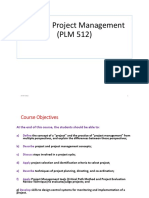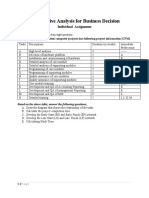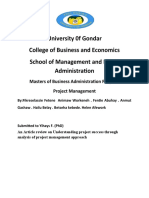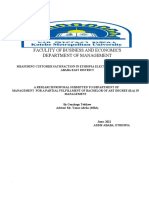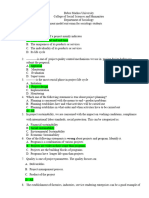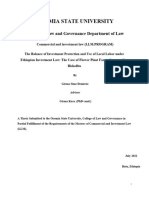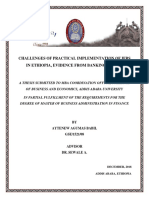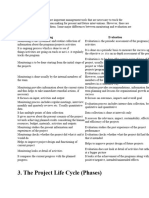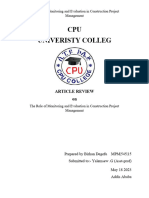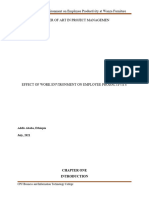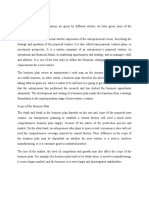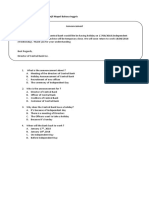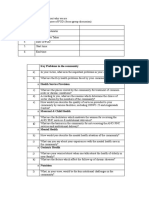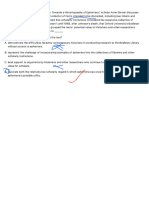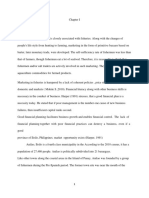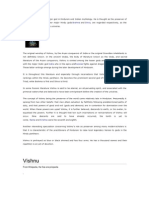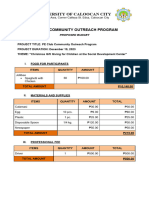0% found this document useful (1 vote)
702 views12 pagesM & E Assignment
The job description is for a Monitoring, Evaluation, Accountability and Learning (MEAL) professional for the Commercial Bank of Ethiopia (CBE) Head Quarter Building Project. [1] The goal is to lead the MEAL system implementation including monitoring, evaluations, lessons learned, and budgeting. [2] The major duties include developing monitoring frameworks, evaluation plans, tracking tools, and ensuring quality reporting to demonstrate the project's effectiveness and progress. [3] The MEAL professional will be responsible for the full monitoring and evaluation cycle of the large and complex CBE Head Quarter Building Project.
Uploaded by
feyselCopyright
© © All Rights Reserved
We take content rights seriously. If you suspect this is your content, claim it here.
Available Formats
Download as DOC, PDF, TXT or read online on Scribd
0% found this document useful (1 vote)
702 views12 pagesM & E Assignment
The job description is for a Monitoring, Evaluation, Accountability and Learning (MEAL) professional for the Commercial Bank of Ethiopia (CBE) Head Quarter Building Project. [1] The goal is to lead the MEAL system implementation including monitoring, evaluations, lessons learned, and budgeting. [2] The major duties include developing monitoring frameworks, evaluation plans, tracking tools, and ensuring quality reporting to demonstrate the project's effectiveness and progress. [3] The MEAL professional will be responsible for the full monitoring and evaluation cycle of the large and complex CBE Head Quarter Building Project.
Uploaded by
feyselCopyright
© © All Rights Reserved
We take content rights seriously. If you suspect this is your content, claim it here.
Available Formats
Download as DOC, PDF, TXT or read online on Scribd
/ 12




